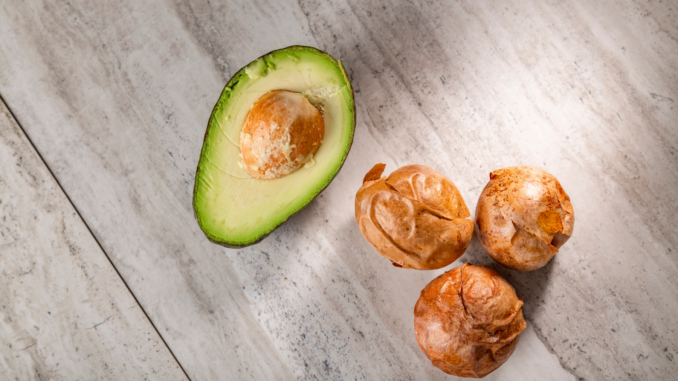

by Bryan Fischer, Horticulturist, Gardens on Spring Creek
Have you ever considered what kind of animal would have to eat avocados to disperse their seeds in nature? No? Now you may!
As they are too large to be eaten by many herbivores alive today, especially those in the avocado’s native range in Mesoamerica, this really can leave a person wondering: “How did this tree evolve?” It does a plant little good to have no way to disperse its seeds across the landscape. A fruit, after all, takes an enormous amount of energy to make and provides little benefit to the mother plant. So, why would a tree go to such trouble?
This hasn’t always been the case: during its ecological prime, the avocado would have been consumed, digested, and then – ahem – distributed in its own pile of fertilizer by Ice Age megafauna (exceptionally large animals). Since the extinction of many of these creatures (like wooly mammoths, giant ground sloths, and a menagerie of others) took place a bit over 10,000 years ago, the avocado probably has been distributed primarily by humans who began to cultivate it for its tasty, calorie-dense fruits.
Interestingly, the avocado is not alone in this phenomenon. Since the mass-extinction of Pleistocene megafauna, a whole host of plants have been left without their seed-dispersing partners. A few of these, like honeylocust (Gleditsia triacanthos) are quite common today, also due to their cultivation in our landscapes. In fact, the specific epithet of the scientific name for honeylocust (triacanthos) translates to “three-spined,” referencing the clusters of massive, macabre thorns that once covered the trunks and larger stems of honeylocust trees; spines these trees needed to ensure that only their seeds were consumed – and distributed – by megafauna on the American savannah of the day. In the American parking lot of today, it’s easy to notice the distinct lack of spines these trees exhibit, as breeding and selection efforts to reduce this trait have made the honeylocust into a superb urban tree, even if at the dismay of the neighborhood shrike.
Also a beloved street tree of our time, the Kentucky coffee tree was first an ecological puzzle. As science came to be aware of the species, experts asked “why does this adaptable tree grow in so few places? And most commonly near waterways, in wet soils to which it is not particularly well-adapted”? When appropriate seed distributors left the scene, the large seed pods of these trees could only be distributed well by moving water, and so populations of Kentucky coffee tree retreated to the verge of waterways.
A variety of other plants are relics of long-gone, mutualistic partnerships: Osage orange (Maclura pomifera), ginkgo (Ginkgo biloba), buffalo gourd (Cucurbita foetidissima), Joshua tree (Yucca brevifolia), and chocolate (Theobroma spp.) being only a few that we Coloradoans might recognize. While we often consider plants as we see them today, these botanical oddities can be quirky reminders of the tortuous life stories plants hold, if we are willing to take the time to learn about them.
So, next time you enjoy some avocado in guacamole or on avocado toast, remember that while it’s tasty, it wasn’t meant for you.
Support Northern Colorado Journalism
Show your support for North Forty News by helping us produce more content. It's a kind and simple gesture that will help us continue to bring more content to you.
BONUS - Donors get a link in their receipt to sign up for our once-per-week instant text messaging alert. Get your e-copy of North Forty News the moment it is released!
Click to Donate
